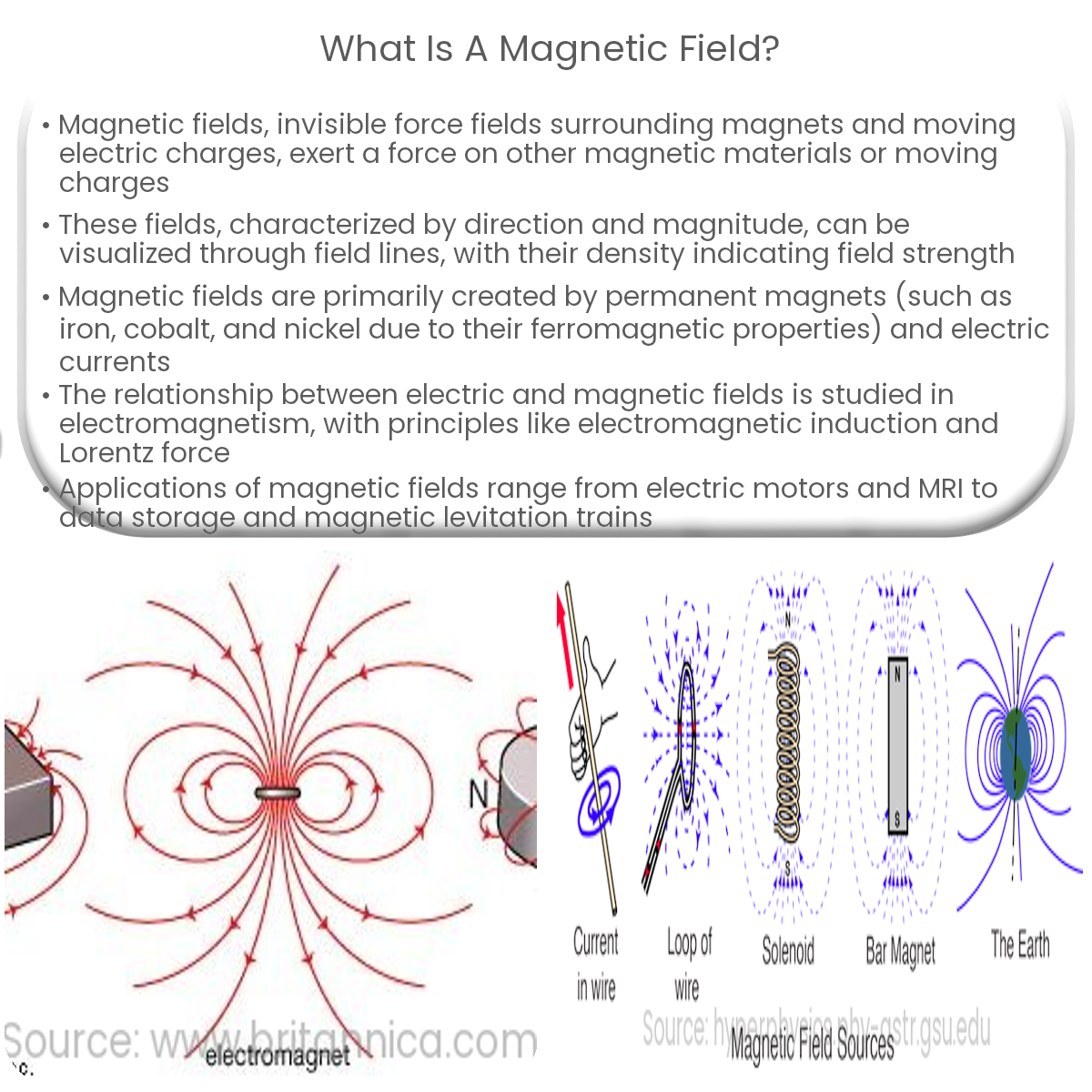A magnetic field is an invisible force field around magnets and moving electric charges, affecting other magnetic materials and electric charges.
Introduction to Magnetic Fields
A magnetic field is an invisible force field that surrounds magnets and moving electric charges, such as those in a current-carrying wire. This field exerts a force on other magnetic materials or moving electric charges, resulting in attraction or repulsion between them.
Properties of Magnetic Fields
Magnetic fields have both direction and magnitude, making them vector quantities. The strength of a magnetic field is typically measured in units called teslas (T). Magnetic field lines are used to visualize the field’s structure, with the lines pointing in the direction of the magnetic force.
- Field lines emerge from the north pole of a magnet and enter the south pole, forming closed loops.
- The density of field lines indicates the strength of the magnetic field; a higher density implies a stronger field.
- Field lines never intersect, as the magnetic force has a unique direction at each point in space.
Creation of Magnetic Fields
Magnetic fields can be produced by two primary sources:
- Permanent magnets: Materials like iron, cobalt, and nickel possess a property called ferromagnetism, which allows them to generate magnetic fields due to the alignment of their atomic magnetic moments.
- Electric currents: Moving electric charges, such as those in a current-carrying wire, produce magnetic fields around them. This phenomenon is described by Ampère’s circuital law and Biot-Savart law.
Electromagnetism
Electromagnetism is a branch of physics that deals with the relationship between electric and magnetic fields. Key principles include:
- Electromagnetic induction: A changing magnetic field can induce an electric current in a nearby conductor, as described by Faraday’s law of electromagnetic induction.
- Lorentz force: The force experienced by a moving electric charge in a magnetic field is called the Lorentz force. This force is responsible for the motion of charged particles in magnetic fields and is the basis for many technological applications, such as electric motors and generators.
Applications of Magnetic Fields
Magnetic fields play a crucial role in various technologies and scientific fields, including:
- Electric motors and generators
- Magnetic resonance imaging (MRI) in medicine
- Data storage devices, such as hard drives
- Magnetic levitation trains (Maglev)
- Particle accelerators and nuclear fusion research



